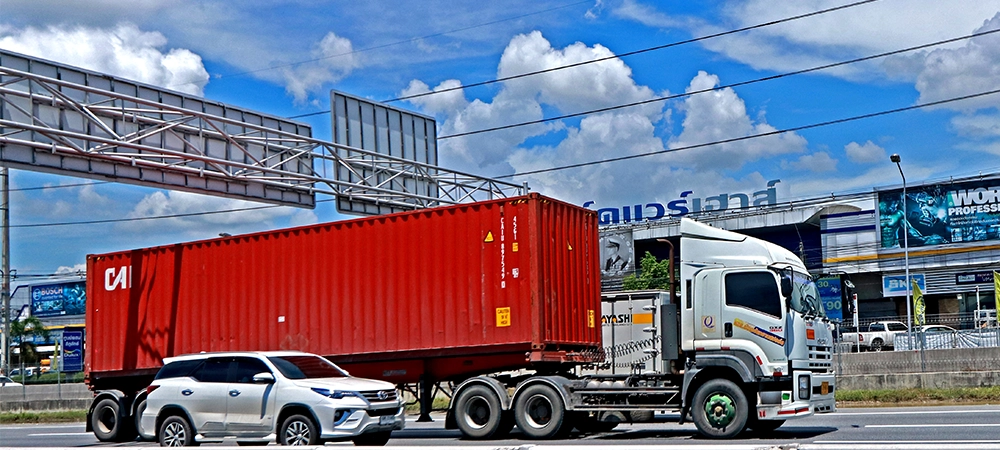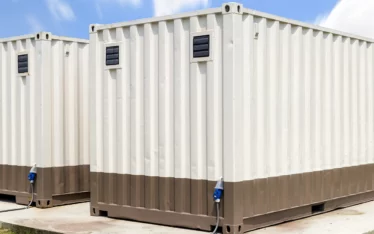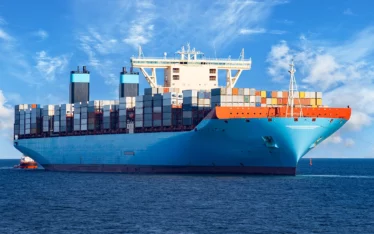Container shipping plays a vital role in international trade, enabling businesses and individuals to transport goods efficiently across vast distances. For those looking to ship goods from Canada to Europe, understanding the intricacies of the process is crucial.
This comprehensive guide is your valuable resource for everything you need to know about container shipping from Canada to Europe in 2023. It explores essential aspects such as shipping routes, transit times, customs procedures, documentation requirements, and cost considerations.
Our cross-border shipping specialists have also provided a list of expert tips to ensure a successful shipping experience. Whether you’re a business owner expanding into European markets or an individual relocating overseas, this guide will equip you with the knowledge needed to navigate the container shipping process seamlessly.
Shipping from Canada to Europe: Best Routes and Transit Times
Several shipping routes are available for shipping containers from Canada to Europe, each offering different transit times and cost considerations. Your choice of cross-border shipping route depends on factors such as the departure and destination ports, cargo volume, and urgency of delivery.
Here are some commonly used routes:
- Atlantic Route: This route involves shipping from ports on Canada’s Atlantic coast, such as Halifax or Montreal, to major European ports, like Rotterdam or Hamburg. Transit times can range from 10 to 25 days, depending on the ports and shipping lines.
- Pacific Route: If your departure port is on the Pacific coast, such as Vancouver, you can opt for this route. It typically involves transiting through the Panama Canal or the Suez Canal and can take around 25 to 40 days, depending on the chosen route and shipping line.
- Rail and Truck Combination: In some cases, it may be more efficient to transport containers inland by rail or truck to ports in the United States, such as Seattle or New York, before shipping to Europe. This option offers flexibility in terms of transit times and allows for seamless integration with the extensive network of European ports.
It’s crucial to consult with shipping agents or freight forwarders to determine the most suitable route based on your specific requirements.
Related Article: Choosing the Right Truck for Full Truck Load Transport
Customs Procedures and Documentation Requirements to Ship from Canada to Europe
Container shipping involves complying with various customs procedures and documentation requirements to facilitate smooth cargo clearance and entry into the European Union.
Here are some essential steps and documents to consider:
- Commercial Invoice: Prepare a detailed commercial invoice that includes the description, quantity, value, and harmonized system (HS) code of each item being shipped. Ensure accuracy and consistency with other shipping documents.
- Bill of Lading (B/L): This document serves as a contract between the shipper and the carrier, acknowledging the receipt of goods and specifying the terms of transportation. The B/L also acts as a receipt and provides proof of ownership.
- Packing List: Include a comprehensive packing list detailing the contents of each container, including item descriptions, quantities, weights, and dimensions. This information assists customs officials in verifying the cargo.
- Certificate of Origin: Certain goods may require a certificate of origin to determine their eligibility for preferential trade agreements or tariff reductions. Consult with your customs broker to determine if this document is necessary.
- Customs Declaration: Fill out a customs declaration form accurately, providing essential details about the cargo, its value, and relevant trade regulations. This document facilitates customs clearance processes.
- Import Licenses and Permits: Some goods, such as controlled substances, weapons, or specific agricultural products, may require special licenses or import permits. Verify the import requirements of your specific goods to avoid delays or penalties.
The customs procedure and documentation requirements for shipping from Canada to Europe can be complex to manage. It’s advisable to work closely with a customs broker or freight forwarder experienced in Canadian-EU trade to ensure compliance with all customs procedures and documentation requirements.
Cost Considerations to Ship from Canada to Europe
When planning container shipping from Canada to Europe, it’s essential to consider various cost factors. The final shipping cost can vary based on the following elements:
- Container Size and Type: Different container sizes, such as 20 feet or 40 feet, have varying shipping costs. Additionally, the choice between standard dry, refrigerated, or specialized containers should be based on cargo requirements and can impact overall shipping costs.
- Freight Rates and Surcharges: Freight rates are influenced by factors like market demand, fuel prices, and carrier availability. Surcharges, such as peak season surcharges or currency adjustment factors, can also impact costs. Obtaining multiple quotes from shipping lines or freight forwarders allows for comparison and better cost optimization.
- Insurance: It’s advisable to consider marine cargo insurance to protect your goods against potential damage or loss during transit. Insurance costs are typically calculated based on the cargo’s value, transportation mode, and associated risks.
- Customs Duties and Taxes: Import duties and taxes are determined by the Harmonized System (HS) codes assigned to your goods. Understanding the applicable rates and regulations will help estimate these costs accurately.
- Ancillary Services: Additional services like container storage, inland transportation, or customs brokerage may incur extra charges. Be sure to actor in these costs when budgeting for your shipping endeavour.
By carefully assessing these cost considerations and working closely with shipping professionals, you can develop an accurate budget and ensure a cost-effective shipping process.
Tips to Successfully Ship Containers from Canada to Europe
To ensure a smooth and successful container shipping experience from Canada to Europe, consider the following tips:
- Plan Ahead: Start the shipping process well in advance to allow ample time for documentation, coordination with shipping lines, and customs procedures.
- Choose Reliable Partners: Select reputable shipping lines, freight forwarders, and customs brokers with experience in Canadian-EU trade and can provide comprehensive support throughout the shipping process.
- Packaging and Labeling: Properly package and label your cargo to ensure safe handling and avoid any issues during customs inspections. Follow international packaging standards and clearly mark packages with necessary information.
- Stay Informed: Keep yourself updated with the latest regulations, trade agreements, and any changes in customs procedures that may impact your shipping process. Regularly consult with shipping experts or visit relevant government websites for reliable information.
- Track Your Shipment: Utilize shipment tracking services offered by shipping lines or freight forwarders to monitor the progress of your container throughout its journey.
Related Article: Choosing the Right Mode of Shipping: Comparing Ocean, Air, and Rail Freight Services
Final Thoughts
Container shipping from Canada to Europe demands careful planning, adherence to customs procedures, and effective coordination with shipping partners. By familiarizing yourself with the routes, customs requirements, documentation, cost considerations, and tips in this comprehensive guide, you can confidently navigate the container shipping process and ensure a successful shipping experience in 2023.
Whether you’re a business expanding into European markets or an individual relocating overseas, this guide equips you with the essential knowledge to facilitate seamless container shipping from Canada to Europe.
And where you need extra help, our container shipping experts at Ontario Container Transport are always ready to provide expert guidance. Contact us today at (905) 695 1501.






